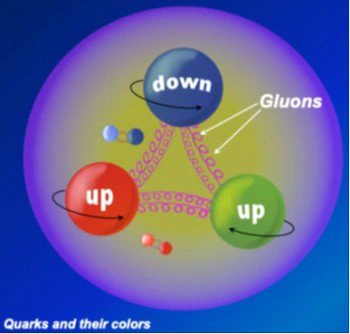Novel Method Integrates Theoretical Principles with Experimental Investigations of Proton Structure

The Field of Science
Newswise — Protons and other subatomic particles that are subject to the strong nuclear force have a complex structure that involves even more fundamental constituents called quarks and gluons. These quarks and gluons bind under the influence of quantum chromodynamics (QCD). QCD is the theory of strong interaction of quarks and the role of color symmetry. However, the mechanisms that lead to quarks and gluons combining to form the particles we see in nature are very mysterious and poorly understood. For example, virtual quarks and gluons constantly appear and disappear within our current picture of the dynamics in the proton. So, which quarks and gluons are actually “in” a proton is a difficult question to answer. A major part of QCD research is driven by the goal of solving open fundamental questions at the heart of how QCD operates and how quantum mechanical theories can be merged with the theory of relativity. Recent progress in theoretical QCD has opened the way to connecting questions about the structure of particles like the proton with high-energy particle c